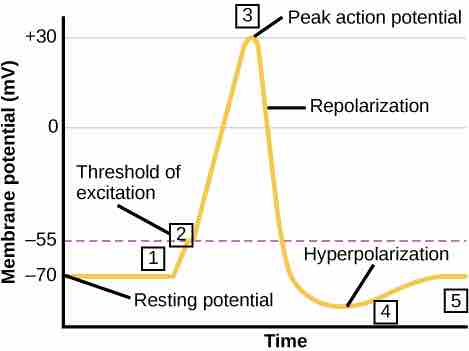Nerve Impulse Transmission within a Neuron: Action Potential

Formation of an action potential
The formation of an action potential can be divided into five steps. (1) A stimulus from a sensory cell or another neuron causes the target cell to depolarize toward the threshold potential. (2) If the threshold of excitation is reached, all Na+ channels open and the membrane depolarizes. (3) At the peak action potential, K+ channels open and K+ begins to leave the cell. At the same time, Na+ channels close. (4) The membrane becomes hyperpolarized as K+ ions continue to leave the cell. The hyperpolarized membrane is in a refractory period and cannot fire. (5) The K+ channels close and the Na+/K+ transporter restores the resting potential.
Source
Boundless vets and curates high-quality, openly licensed content from around the Internet. This particular resource used the following sources: